This article was posted on the old blog during the pandemic (on 12/27/2020). I thought it was an interesting question and a topic that is worth retrieving with some amendment and different images.
Question:
Hi, Pastor Frank! I’m curious if you have any thoughts on how men should navigate the somewhat blurred lines between nudity and pornography in the contemporary era. I’ve occasionally worked as a nude model for life drawing classes over the past few years, which seems pretty clearly nonsexual to me. In contrast, I don’t think I could justify being a stripper (even though I find films like Magic Mike interesting) because it seems too overtly sexual. But it seems like there are an increasing number of situations where the boundaries between nudity and sexuality are more blurred. For example, paint studios like The Artful Bachelorette allow women to hire a nude male drawing model instead of a stripper and I’m not sure how I feel working for a company like that. How/where do we draw the line?

Frank answers: I’m kind of flying in the dark on this one. I’ve never been a life model or attempted to draw one. I haven’t heard of the Artful Bachelorette, and certainly have never been to a bachelorette party. But the question of the fine line between nudity and pornography is one I’ve treaded in my own blog as I’ve looked for images to illustrate themes dealing with the body.
I think when it comes to live situations, the nude body is what God created; we humans created clothing and we create art. The body should be treated with honor and respect. We are also endowed by our Creator with sexuality, and that too should be treated with honor and respect. I think pornography uses the body as an object to intentionally awaken if not satisfy lust. That, I think, is where the line is crossed. Unfortunately, it is a blurred line since what turns someone on sexually is subjective and context has to be considered.
Pictures of men and women engaged in sexual acts are found in drawings on stone age cave walls and carved onto ancient Indian temples and etched onto Greek urns. We give such images a pass because of their value as historical artifacts. If we were displaying photographic images or videos of coitus, oral or anal sex, we would classify them as pornographic in our time and place. We end up banishing from the eyes of the general public not only visual portrayals of such sex acts but also so-called “private” parts of the body.
This even applies to religious art. For example, there’s no question that Romans crucified their victims naked to increase the humiliation of the victim in this public spectacle. But our crucifixes cover Jesus’ genitals with a loin cloth. Crucifixions themselves have a pornographic quality and religious art has usually sanitized them. Peter Paul Rubens went about as far as he could in his painting of “The Crucified Christ” to show both the horror of the execution and the nudity of the victim. Is this pornographic? Art critics have suggested that the bulge in the loin cloth added to the crucified Christ conceals a probable erection such as naked victims might get. But is showing a male erection always pornographic? After all, it is a biological fact of life in the male body.
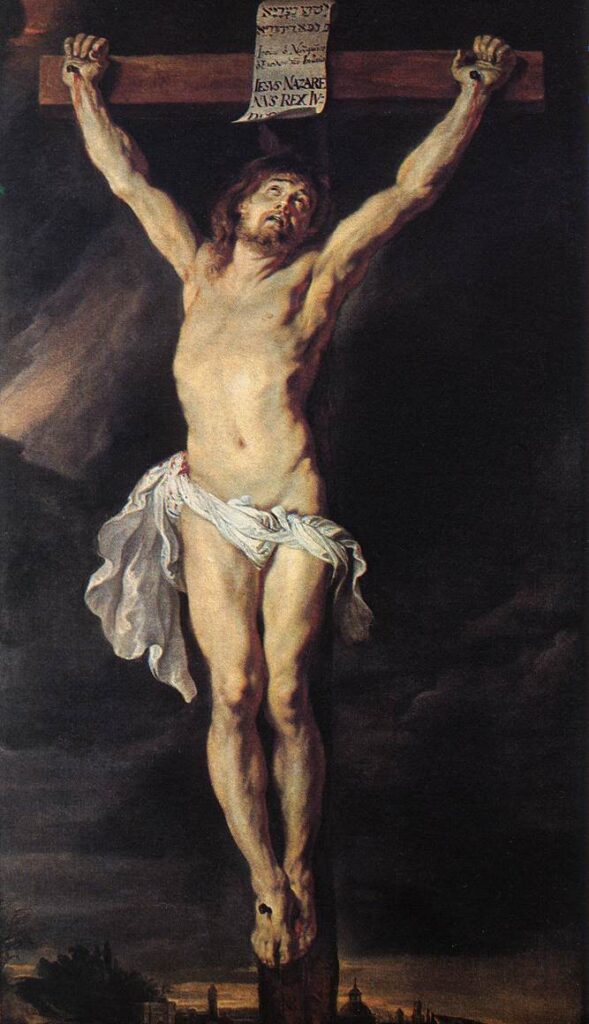
In recent times there has been a tendency to portray the crucified Christ in his uncovered naked vulnerability on the cross, such as this painting by Amber Cobelle.
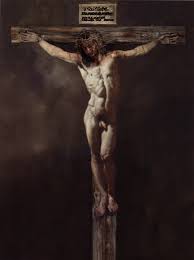
The word porneia is used by St. Paul to refer to prostitution. Prostitutes or sex workers are those who sell their body for sex, whether with a customer or to satisfy voyeristic interests by performing a sex act with a partner or solo that the customer pays for (for example, on Chaturbate or FansOnly). One can make a living by using one’s body as a performer, for example, in dancing or modeling. This is not prostitution since sex is not involved, even if one dances nude on stage or poses nude for an artist or an art class.
Artists have used life models for as long as art has flourished. Lucas Cranach the Elder, friend of Martin Luther (godfather to the Luthers’ oldest child) and illustrator of Luther’s German Bible, probable used many Wittenberg ladies as life models to paint all the nudes he was commissioned to provide for his patrons, often using a pagan theme like Venus the goddess of love. Cranach’s studio in Lutheran Wittenberg had one of the most prolific outputs of female nudes of any Renaissance art studio. Cranach also painted Adam and Eve in their natural state without fig leaves in several of his religious paintings, such as “The Allegory of Law and Gospel.”

Many Renaissance painters also used male models to represent classical pagan figures or biblical figures or life activities. Michelangelo undoubtedly used many live models in Rome to festoon the ceiling of the Sistine Chapel with all those nude males lounging above the worshipers below in suggestive poses (as below).
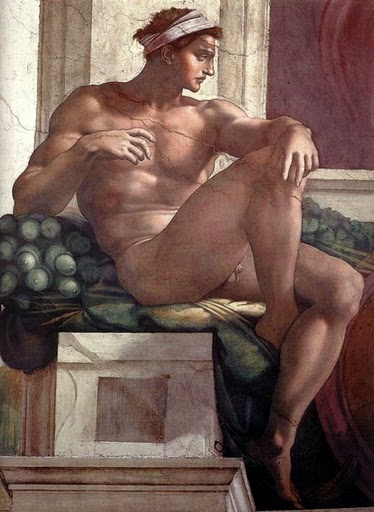
A recently discovered nude male with a now-known model is “Boston’s Apollo” by American artist John Singer Sargent (1856-1925), who was the most successful portrait painter of his generation. He met a 26-year-old Black elevator operator named Thomas McKeller, whom he used as a model for a decade, often for nude portrayals. One of the most famous was “Atlas and the Hesperides,” a painting that was part of the artist’s large commission of a mural for the rotunda of Boston’s Museum of Fine Arts. But one of the best portraits using McKeller’s body Sargent kept for himself. It represents emotional or sexual feelings for his model (it is thought that both the artist and the model were homosexual). The original work was of a full-frontal nude angel, although Sargent later brushed the wings away to render is subject more human. The figure is unashamed, thrusting his chest forward with his legs splayed. He also seems like a suffering person with his head turned upward toward the source of light.
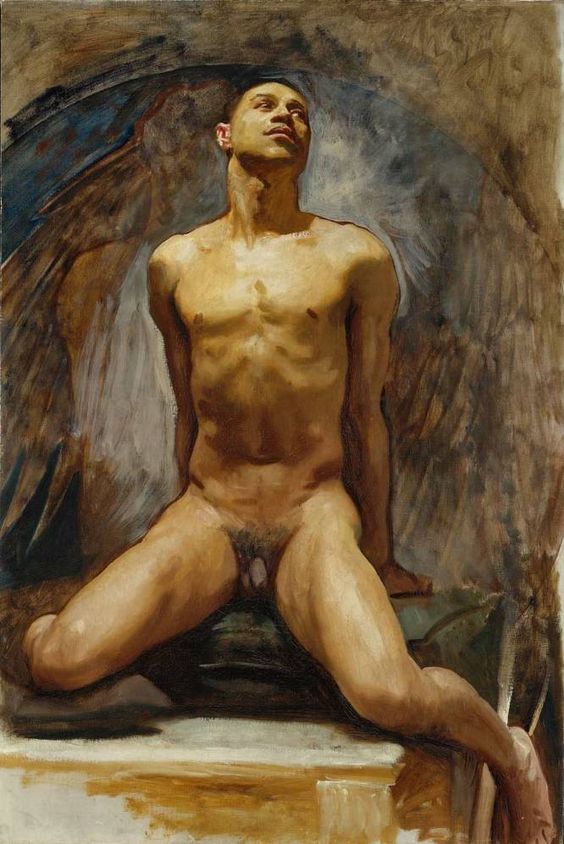
College art classes and classes in art studios continue to provide nude models for life drawings. Many of these models are professional models or dancers who know how to strike the various poses the art instructor calls for. I assume our questioner falls into this category. I understand that a strict etiquette is followed in life drawing classes.
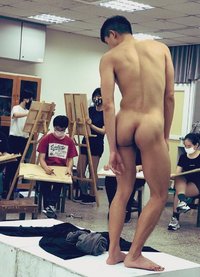
Photographing nude bodies can also fall into the area of artistic portrayal. I do not think that exposing one’s naked body for a painting or photography, even if striking an erotic pose to express sexual desirability, is pornographic. A nude study of the body is not pornography. Pornography is demeaning the body of the model or actor, especially exploiting the vulnerable. Photographers as well as painters have used naked models for non-sexual nude studies.

Our questioner contrasts this non-sexual use of models with strip dancers, whose purpose is precisely to arouse the patrons in order to garner good tips. Male strippers may also be professional models or dancers. Many work in other professions. But they still have to work out and practice to keep their bodies fit and their routines entertaining. In strip clubs touching the body is allowed, but within limits. Even if genitals are not displayed, there is an intentional lewdness used in the gestures and movements to arouse the patrons (usually females who come to see the male strippers). I suppose, by my definition, that I would regard strip dancing as pornographic. But while the show is erotic, a line is not crossed from nudity to sexual activity. The dancers know when to back off. Moreover, their performances are public and are subject to local legal standards of decency. Magic Men do not strip totally naked.
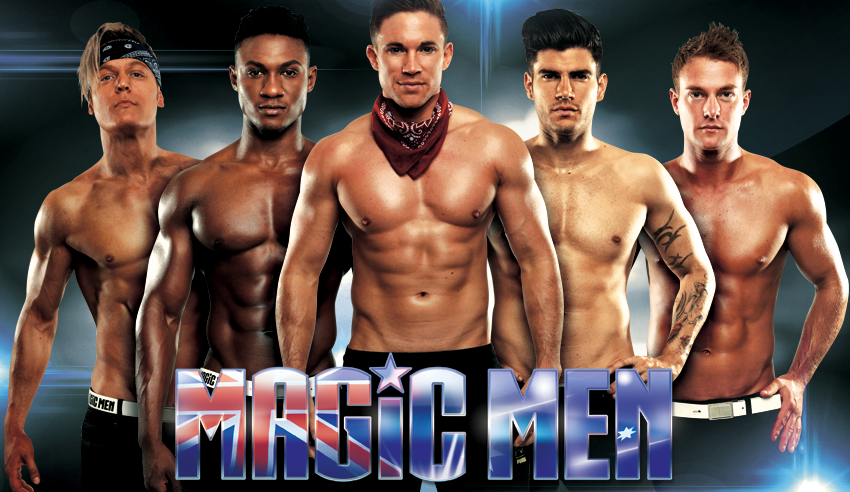
The striptease show format is to remove one article of clothing at a time. However, it is also the case that leaving some article of covering on the body is more erotic than total nakedness. They get down to their jockey briefs and no further. In total nakedness, what you see is what you get. In partially covered nudity there’s always more to be revealed. That’s why gradually stripping is so titillating. Groups like the Magic Men have rehearsed theme performances that also involve dance and athleticism.
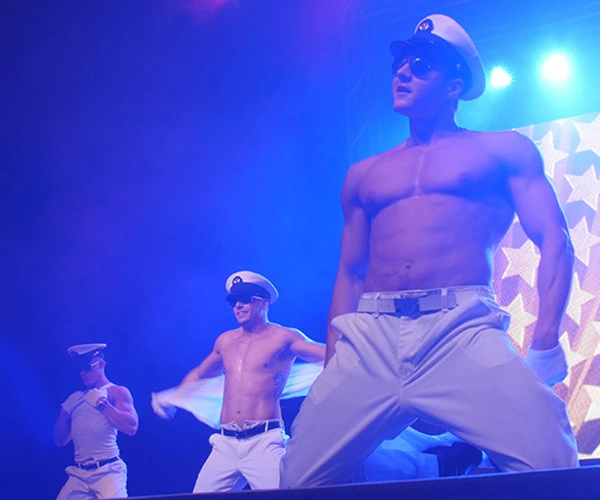
Our questioner suggests that in events like The Artful Bachelorette, the line between nudity and pornography is blurred. I had to read up on this company, which started in Australia and has expanded to a half dozen cities (so far) in the U.S. Male strippers have been a standard item in bachelorette parties. This new approach has an educational component. An art teacher instructs the women in the basics of painting a nude body and then has the professional nude model uncover himself. There is undoubtedly nervous giggling and joking. Some joking is provided by the art teacher herself (like “Don’t forget to draw his penis”) to loosen up the participants. Reviews of these events state that after a while the women get into their paintings and are interested in comparing one another’s efforts. A good time is had by all, including drinking wine or champagne (which also serves to loosen the inhibitions of the participants). As in art classes, however, there are rules of behavior, including: no photos of the model when he is naked and no touching his body.

In my research I learned that The Artful Bachelorette isn’t the first company to come up with this idea. There are agencies in other countries, like Ireland and the UK, that provide live male models for “hen parties” for all sorts of events and in various venues.
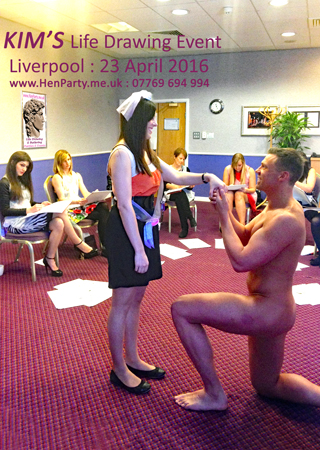
It seems to me from reports I’ve read that these parties are like art classes that are less serious about producing artistic representations than collegiate or studio art classes. Since the model, unlike the strip dancer, is not striking lewd poses or engaging in erotic movements, it doesn’t qualify as pornography. The model is not trying to arouse the women, just titillate them. But it does seem like a situation in which women are gawking and probably making lewd comments, having had their tongues loosened up with champagne or wine. The point of these parties is to have fun. Initially it would seem that the participants are not exactly honoring and respecting the body, but maybe by the end of the session they are respectful and grateful to the model.
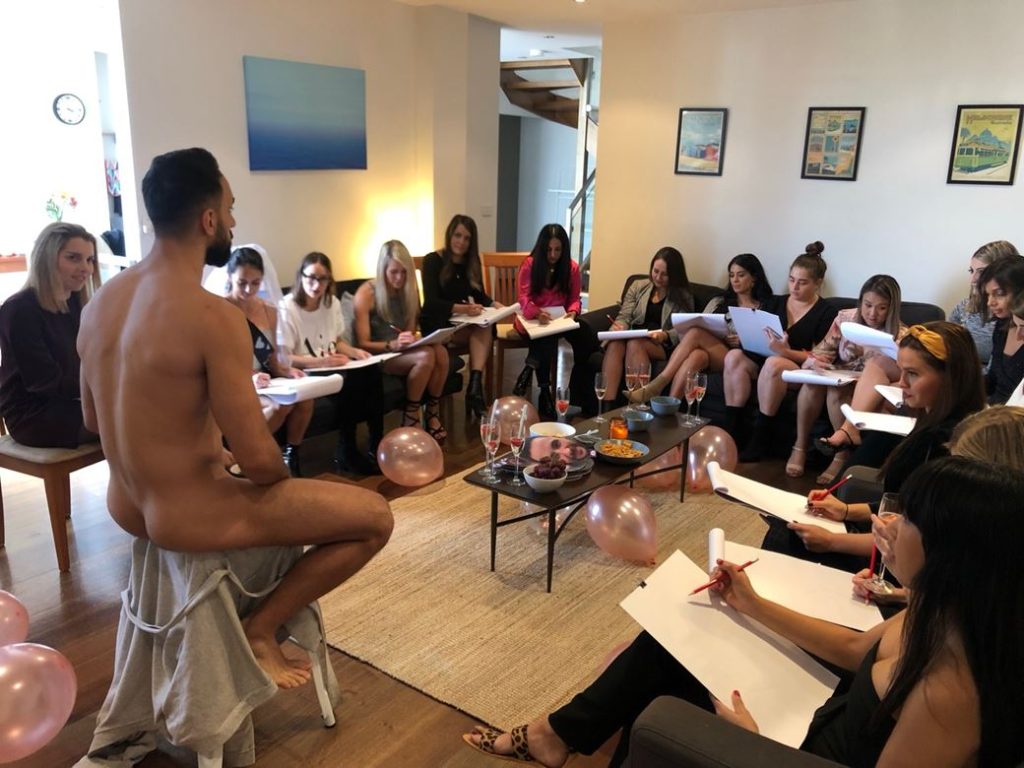
The purpose of the “hen parties,” as they are called in the UK, is to have a good time. There is no doubt that after the initial tittilation the women develop a relaxed and playful demeanor toward the model.
But suppose the genders were reversed and there was a bachelor party in which the men were attempting to draw a nude figure using a female life model accompanied by drinking beer, joking, and making lewd remarks? In our present age of gender sensitivities, I don’t think this would be acceptable. I think women ought to also honor and respect the nude male body of the model who poses for their art parties.

I can understand that our questioner might not want to make himself available for bachelorette or hen parties. But he might at least first make inquiries from the management about how the sessions go and what is expected of his performance as he decides whether or not to accept such gigs. There could be art parties in which the participants come to appreciate the nude body of the model and learn how artists make use of it and disassociate nudity from sex.
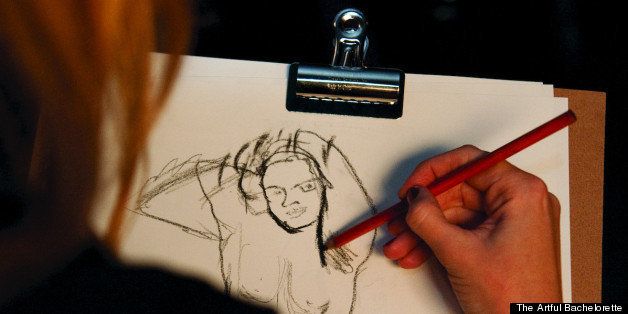
There could also be another positive outcome of these parties. Even in academic life drawing classes which are nonsexual, the model (whether male or female) is an object to be painted. In the hen parties the participants can ask questions of the model and come to know something about him. This de-objectifies him. The model can become a subject relating to other subjects. A person emerges who is more than his body. Or perhaps we could say that the artist creates a human body that also discloses a person, a soul, if you will.
The following painting by Pat Kelley uses the form of a full “inspection” pose with arm pits exposed and the body opened up to show what can be learned from this subject.

The display of the male penis, especially an erect or semi-erect penis, is the last taboo in art for public display. The male nude has suffered a steep decline since its glory days in ancient Greece and Rome and in the Renaissance revival. We’ve reached the point where women’s breasts, which are also seen by men as a sexual appendage, might be discreetly shown in paintings or posters on public display. But seeing the male sex appendage, or even the hint of it, is forbidden (although we’re beginning to see the top of pubic hair). It doesn’t do to say that this is just our cultural value. Why in our culture is the very sight of the male penis (like the one up above) considered pornographic, even if it’s not engaged in a sexual act? Why is that appendage so threatening? Erections are a biological fact of life.
I’ve never had art lessons, but I would like to think that knowing the model as a person would enable the artist to make something human and vulnerable of the nude figure. I think the best of nude art does that. That enables nude art to transcend pornography. The artist has created a real person who happens to be nude. The pose itself and the facial expression reveals whether this person is naked and ashamed or naked and unashamed. In any event, I can see why artists want to paint nudes and photographers want to photograph them. Clothes do not make the person. Before there was clothing there was the naked body.
Pastor Frank
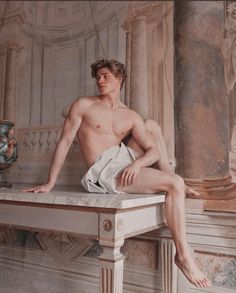


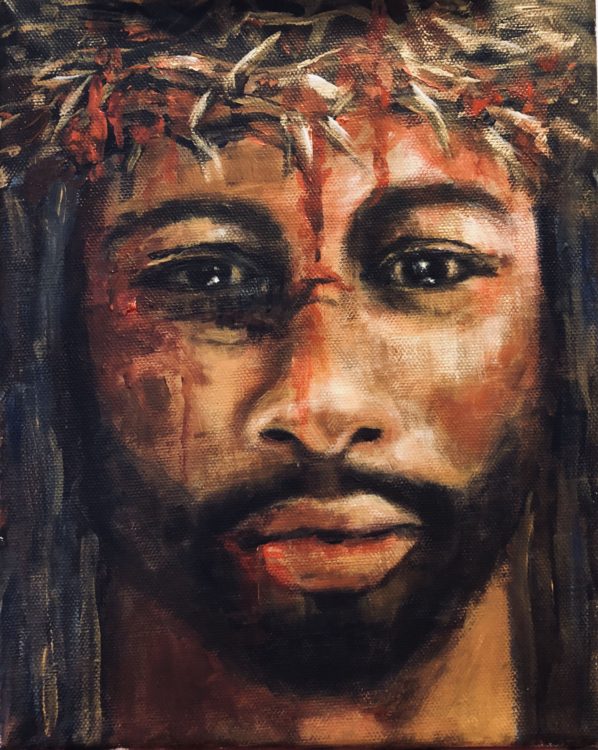

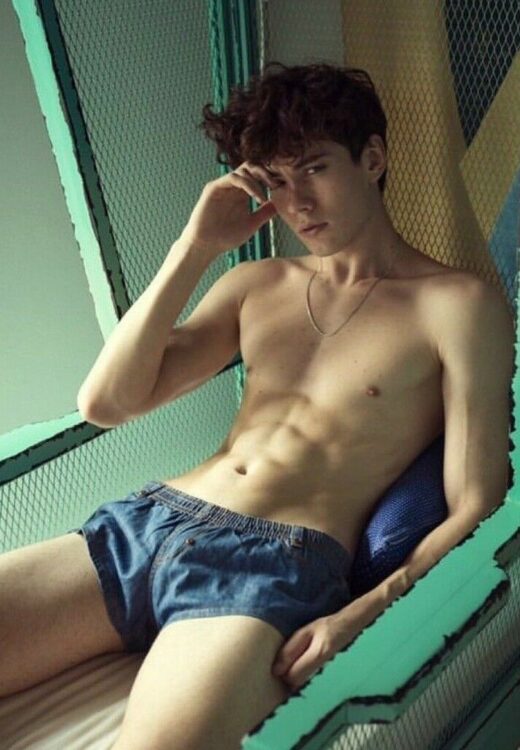

Michael Simonds sent a comment.
I was born and raised in Seattle, Washington. I was drawing and painting since I was 3 years old. After graduating from High School, I entered The University of Washington, in Seattle, in the Five Year Art School. I majored in Painting and Printmaking and Minored in Theater Arts. I was 18 years old, and we had 3-hour studio classes, with nude artist life models. Almost all of our models were nude women. We did, however, have one male nude model, who did Yoga. His name was Charles White. He was probably 20 years old. The other male model was a fellow art student. For some reason, the class asked him to be clothed. I often regretted not becoming a nude male model for the art life drawing and painting studio classes. I even thought all the guys in the class should have stripped nude for the woman art students. I graduated in 1970, so it was during the 60s, and I wondered why we did not have more nude male models. We should have had joint classes with the medical students for anatomy and I probably would have fainted seeing cadavers being dissected.
After graduating with a Bachelor of Fine Arts in Painting and Printmaking, I had no idea how to make a living as a professional artist; the Art School never offered classes on the Business of Art. I entered Wartburg Theological Seminary, Dubuque, Iowa. I graduated in 1974, earning a Masters of Divinity. I was drafted by the Southwestern Minnesota District of The American Lutheran Church. I was ordained in August of 1975, and served two parishes, one in New Ulm, Minnesota, and Lester Prairie, Minnesota. I have no problem with male or female nudity in Art. I had a friend, who was a male artist in Minnesota, who once said, “The only way you can get away with painting male nudes is in religious paintings.” Since leaving parish ministry, I got married and we formed an Art business, WinterWind FolkArts, Ltd. We still do Art, and I have this overwhelming need to paint and draw nudes again. Men are easier to get to pose nude than women. My style is realistic and I do traditional Oils, as well as Acrylics.
(Originally sent in January 2021.)
Thank you for your thoughtful reply to my question! I was mostly just curious about The Artful Bachelorette and similar companies from a hypothetical perspective.
Being a nude model for more traditional drawing classes has been a tremendously rewarding experience. I was bullied when I was younger over my physical appearance, and modeling has helped to improve my own body image and overall self-confidence.
Hi, all. I’m the person who sent in this question when it was originally published last year.
I wanted to say that I’ve had more time to think about the issue and that I’ve personally reached the conclusion that I think nude art modeling and striptease are both morally permissible, although striptease is a more grey zone. I think both activities can be problematic if done with flawed intentions (for example, if a performer has the intent of picking up sexual favors from audience members ) or if done in a manner that is disrespectful to one’s own body (ie, taking anabolic steroids). But I don’t think the act of nudity itself or disrobing for other consenting adults should itself be regarded as inherently sinful.
I will admit to finding the topic of male strippers fascinating, probably because it’s so far outside of my own comfort zone. One of the things I’ve learned from talking to male strippers is that there’s much more to it than “show up and take your clothes off.” There’s a whole craft to it that requires both athleticism and artistic ability. I sometimes wish I had that athletic ability myself, but at age 40, I’m going to stick with my day job.
Frank: Thanks for retrieving this article from your old blog. (I missed this one in the pandemic.) I was one of your respondents about boys’ nude swimming. I also had numerous experiences with modeling nude for artists, as well as appearing in art photography and “pornography” as it was understood then (50 years ago). My experiences suggest a couple of responses based on my personal experiences.
A nude male of any age is above all visible. A clothed male body implies sexual dimensions in an implied social context of power and identification; a nude male body challenges that framing and embodies a different kind of power.
Hunter: You have concluded that you’re going to stick to your day job. Like you, I find the craft of male strippers fascinating (I also never practiced it).
Years ago I did work as a nude waiter in several events, male- or female-only, or mixed, and found I was treated more respectfully in the latter two kinds. Some men presumed they had the right to fondle me, but women always asked. (I allowed it whenever it was gentle and and the man or woman was responsive to me as a person.)
In later years I have worked as a nude butler, maître d, event coordinator, or MC exactly because I’m older and not stereotypically muscular or hyper-masculine. (How did people know I was the maître d? I was the one wearing a white bow tie.) The younger males (waiters, bartenders, life guards, for example) appreciated an older man gently stepping in to calm certain kinds of situations. The work was engaging and very “hands-on” (and you can take that any way you like). Several of these events have occurred in social contexts that appeal to people over about 60. I also have worked as a model, because some artists want an older nude male.
If you (Hunter) want to find nude work, I’m sure you can find it. It can be a lot of fun, and is oddly empowering and affirming. The veiled market or network (not underground) is always looking for willing males, especially these days (—which give “short staffed” a whole new dimension).
I appreciated Gavin’s comments on Frank Answers About Swimming Naked, and I appreciate his comment here. Gavin actually wrote a much longer response that included an analysis of the paintings with links to similar paintings and photos by way of comparison. Because of its length and the fact my my blog does not allow links or pingbacks, I suggested to Gavin that he post it on his own blog and include a link to this article. Then I would include a link to his blog. Little did I know that he had to create a new blog to accommodate my suggestion. So I will provide the link that readers can cut and paste. I advise you that it contains links to nude male bodies (photos and paintings). If you’re offended by that, don’t click on the links. But I invite you to read what he wrote. https://calamus.rowingtoithaka.net/index.php/links/
I have personally experienced many changes in American attitudes toward nudity in two distinct domains: real life and depictions. Experiencing nudity in real life engages empathy, and the non-verbal communications that are necessary to recognize another person as fully human. Depictions are representations that ideally attempt to communicate some aspect of this human connection.
Human evolution has made the body meaningful in many ways; beauty, pathos, eros. To be art, a depiction needs to evoke empathy. Art may be erotic, but not purely sexual. Porn is any depiction that is intended only to arouse sexual urges, at worst it seeks to block empathy, to make other people into objects. The history of Western art has had great nudes that engages empathy; but it has also had a lot of soft-core porn, usually of idealized female figures lounging suggestively; the classical painter’s version of a Playboy centerfold.
Such depictions can be mass-produced for an audience who has had little opportunity to have the experience of nudity as an integral part of life. I was fortunate to be a young adult during the brief period in America when nudity could be experienced in contexts that were not purely sexual. I was [re]born a week after Woodstock and became part of the skinny-dip generation as what had been a few secluded swimming holes became many clothing-optional beaches. In addition, I had been drawing nude models since 1971 and became a model about a year later.
The figure drawing class had always been a situation in which nudity could be experienced where the task was to create art, not be a voyeur. In the 1970s, this came together with the closest the United States has come to an appreciation of social nudity or naturism. Oddly, I feel the groundwork for this freedom began in the supposedly uptight 1950s when I was one of many very young children at the beaches of the Chesapeake Bay. It was normal for us as toddlers to be naked, either briefly while being changed or allowed to play in the water. Not every mother did the same, but none objected.
It did not last; the mass marketers reclaimed their territory. Hugh Hefner, America’s official pimp, claimed to have started the sexual revolution when he actually made it almost impossible to depict nudity with empathy. Pictures of naked toddlers have become porn banned from the internet. Events such a “Artful Bachelorette” propose that female equality means having their own version of soft-core porn. Instead, everyone needs to go to a real figure drawing session, which continue to give people the opportunity to experience human bodies as they are in real life. Talent is not essential, but empathy is.